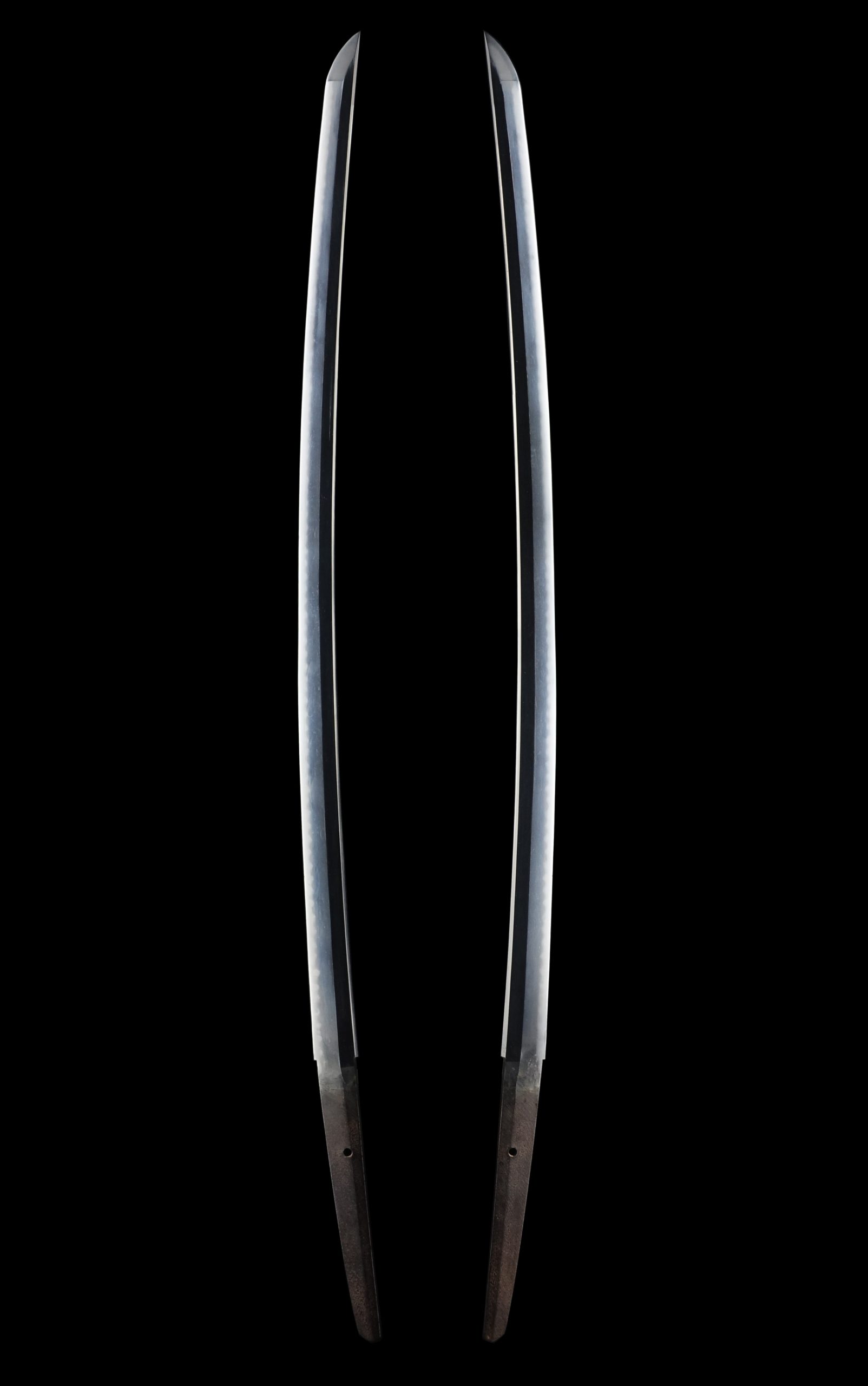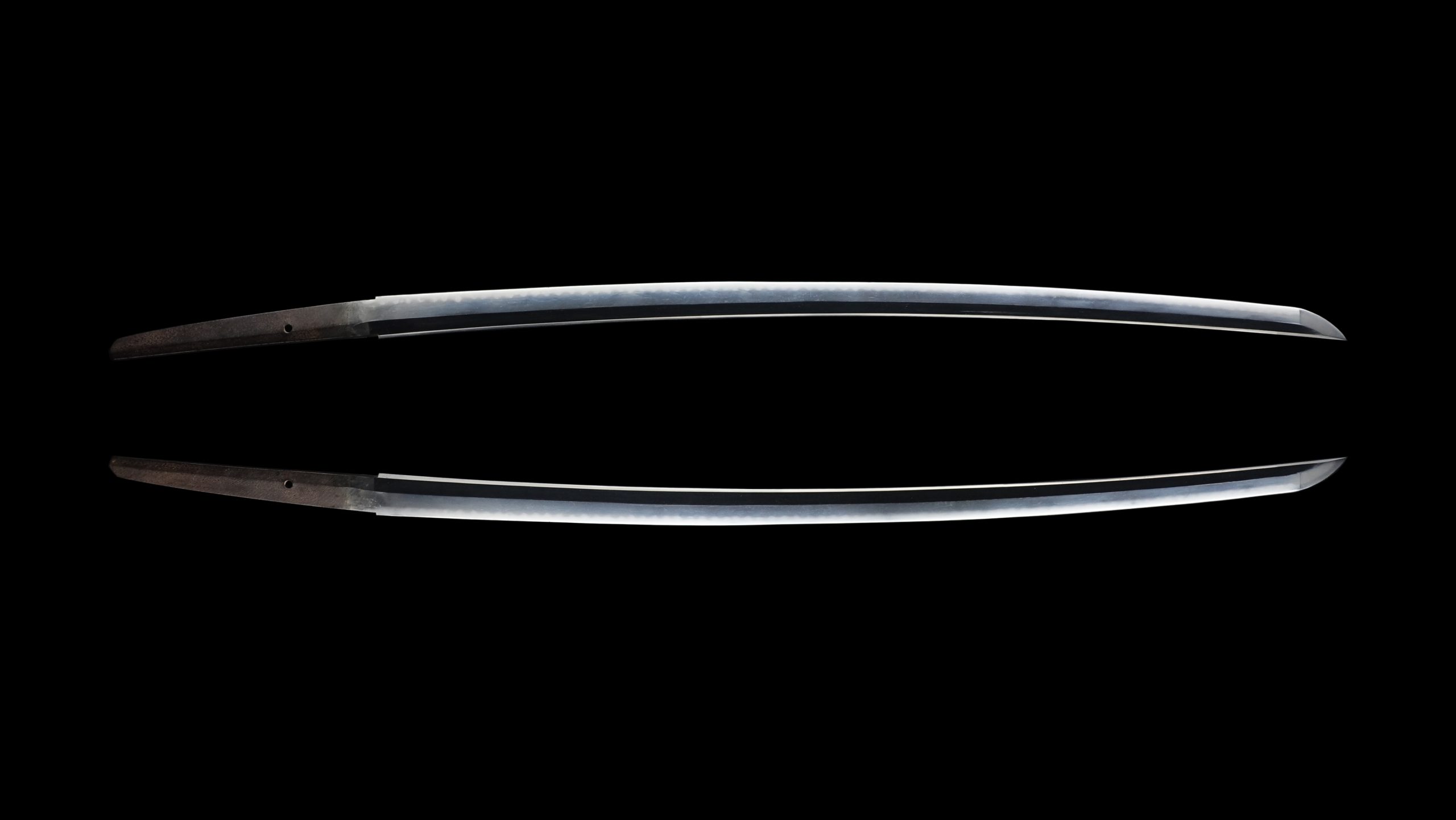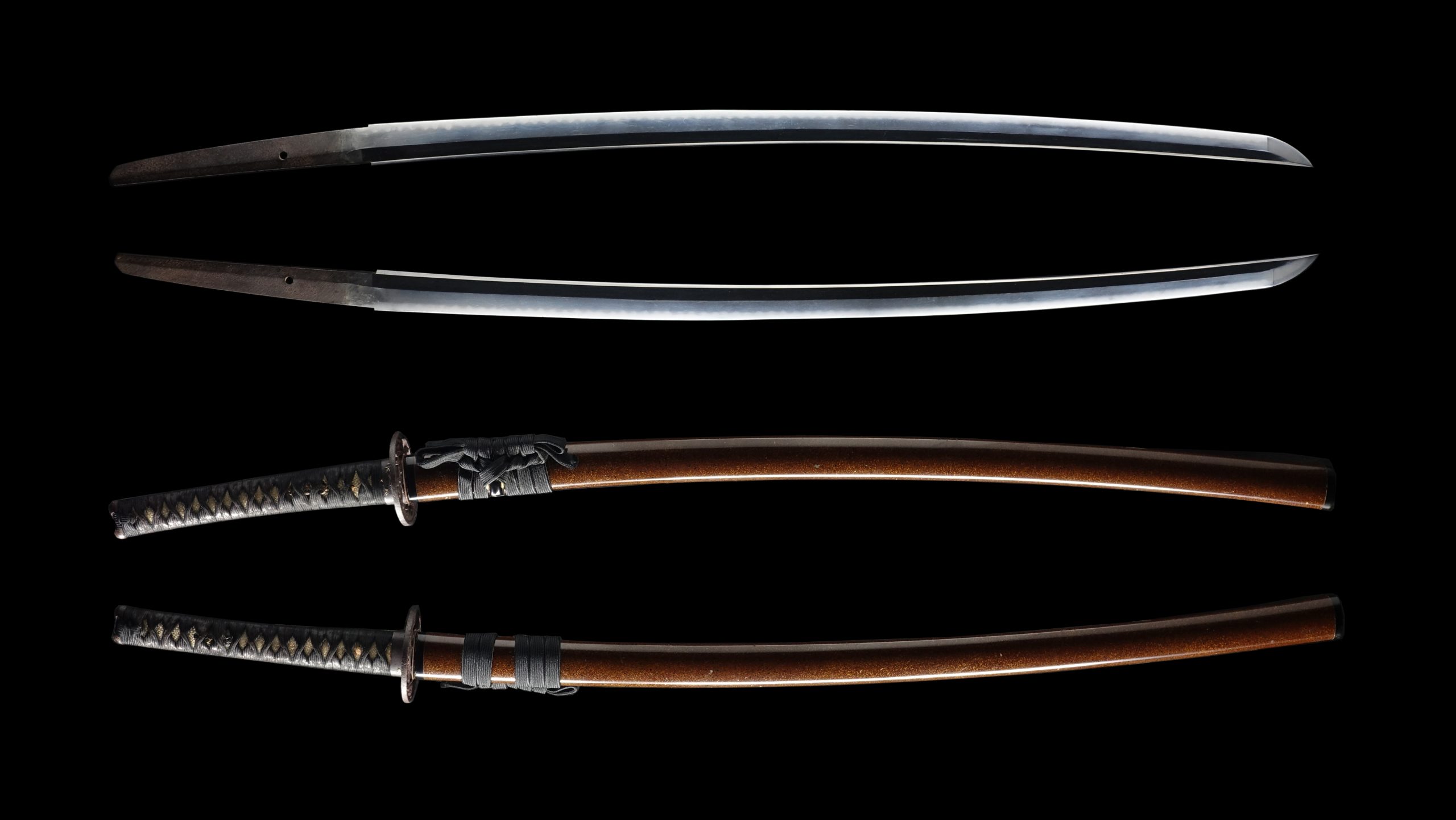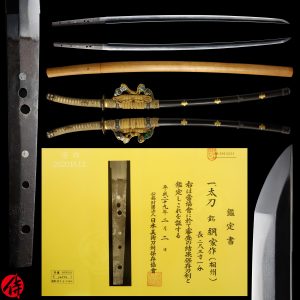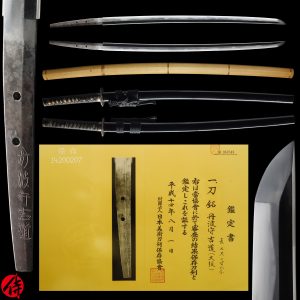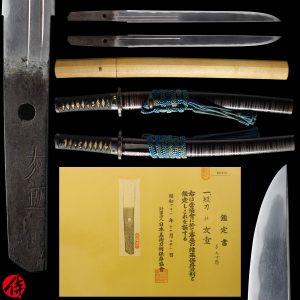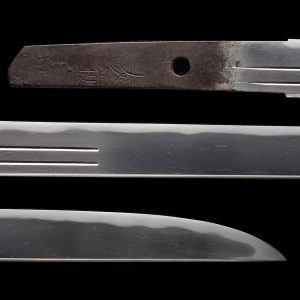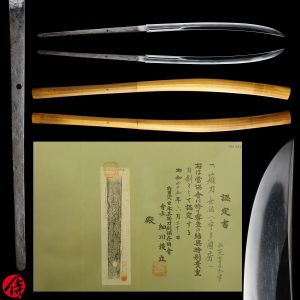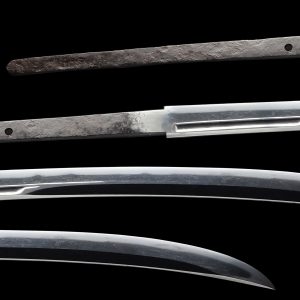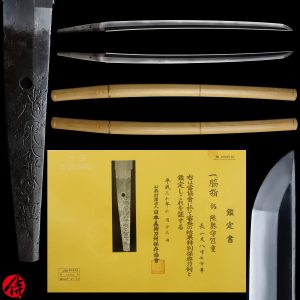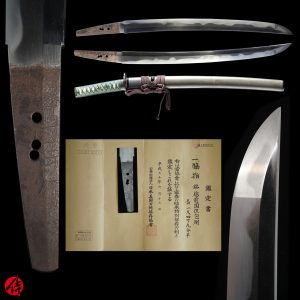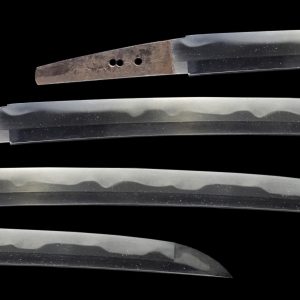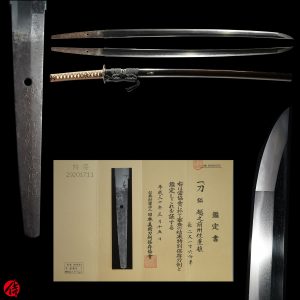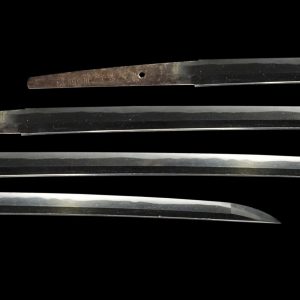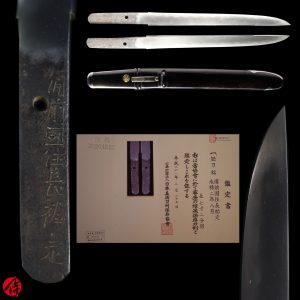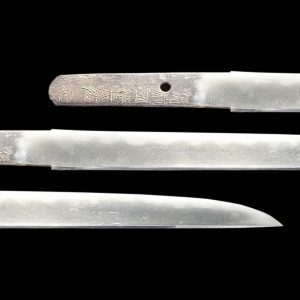Antique Japanese Sword Katana Attributed to Aizu Kanetomo with Kicho Certificate
【Description】
This blade is attributed to Aizu Kanetomo (会津兼友) by NBTHK while there is no signature on the tang. Aizu is the name of the domain (today’s Fukushima prefecture) and the place where Kanetomo resided, forging swords.
It is said that the swordsmith name “Kanetomo” lasted 8th generations from the Genroku-early Meij era (Late 17th – Late 19th century).
And we believe the attribution is given to the later-gen Kanetomo from the late Edo period(mid-late 19th century) based on the blade’s characteristics. Kanetomo belonged to Aizu Kanesada school.
Aizu Kanesada school was founded by Kanesada, who had forged swords in Mino province(Today’s Gifu prefecture) until the Keicho era(1596-1615). This Kanesada was the grandson of Noshu Izumi no Kami Kanesada(濃州和泉守兼定), a renowned swordsmith in Mino province.
Kanesada relocated to Aizu from Mino to serve Gamo Ujisato(蒲生氏郷), a powerful feudal lord who worked for Oda Nobunaga. And, Kanesada founded Aizu Kanesada school there.
Aizu Kanesada school lasted 11th generations by the end of the Edo period.
The first-gen Kanetomo was an apprentice of the third-gen Aizu Kanesada.
And, he became a Hanko for the Aizu domain. Hanko means the swordsmith who exclusively served a specific domain. Since then, the generations of Kanetomo had forged swords for the Aizu domain in Fukuchi Prefecture. We believe Kanetomo’s craftsmanship had been highly appreciated among Samurai in Aizu.
【 Blade】
Cutting Edge Length(Nagasa): 75.4 cm( 29.7 inches)
Curvature(Sori): 2.0 cm ( 0.79 inches)

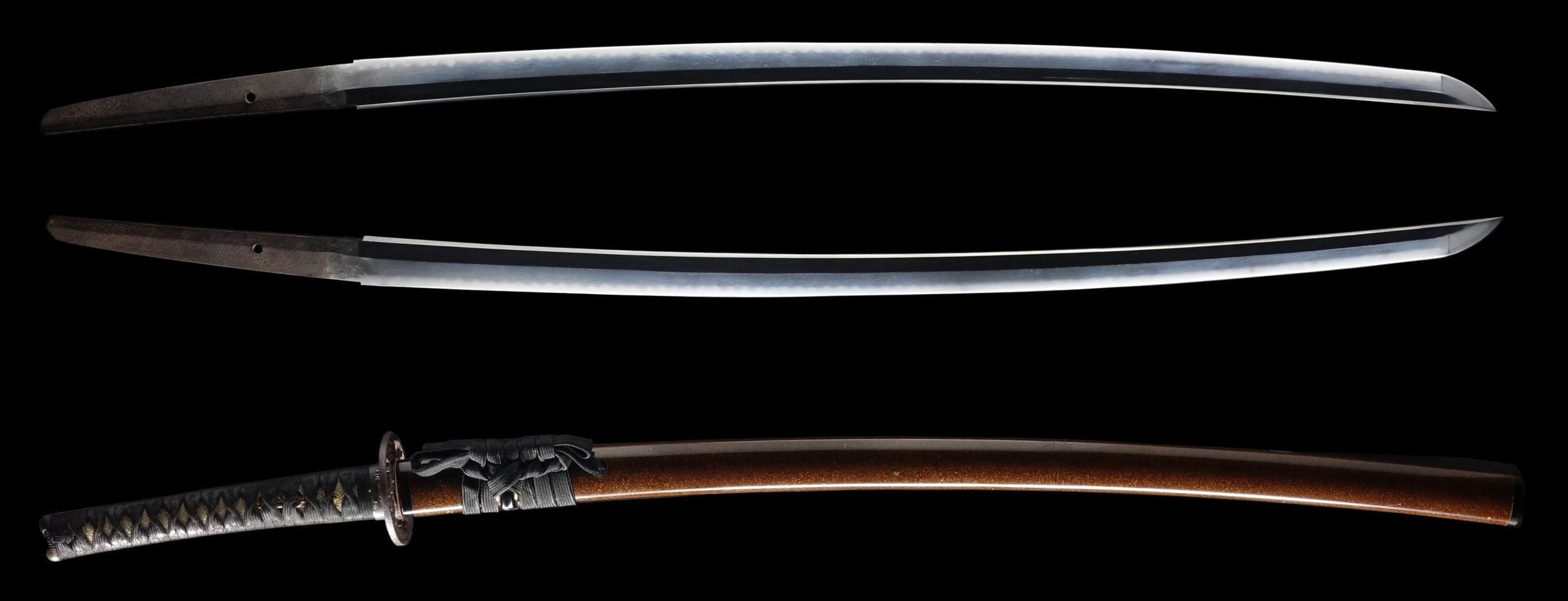
Hamon:
The crystalline structure which forms along the cutting edge of a blade as a result of the hardening process
Jimon(Jihada):
visible steel surface pattern created by folding and hammering during forging process
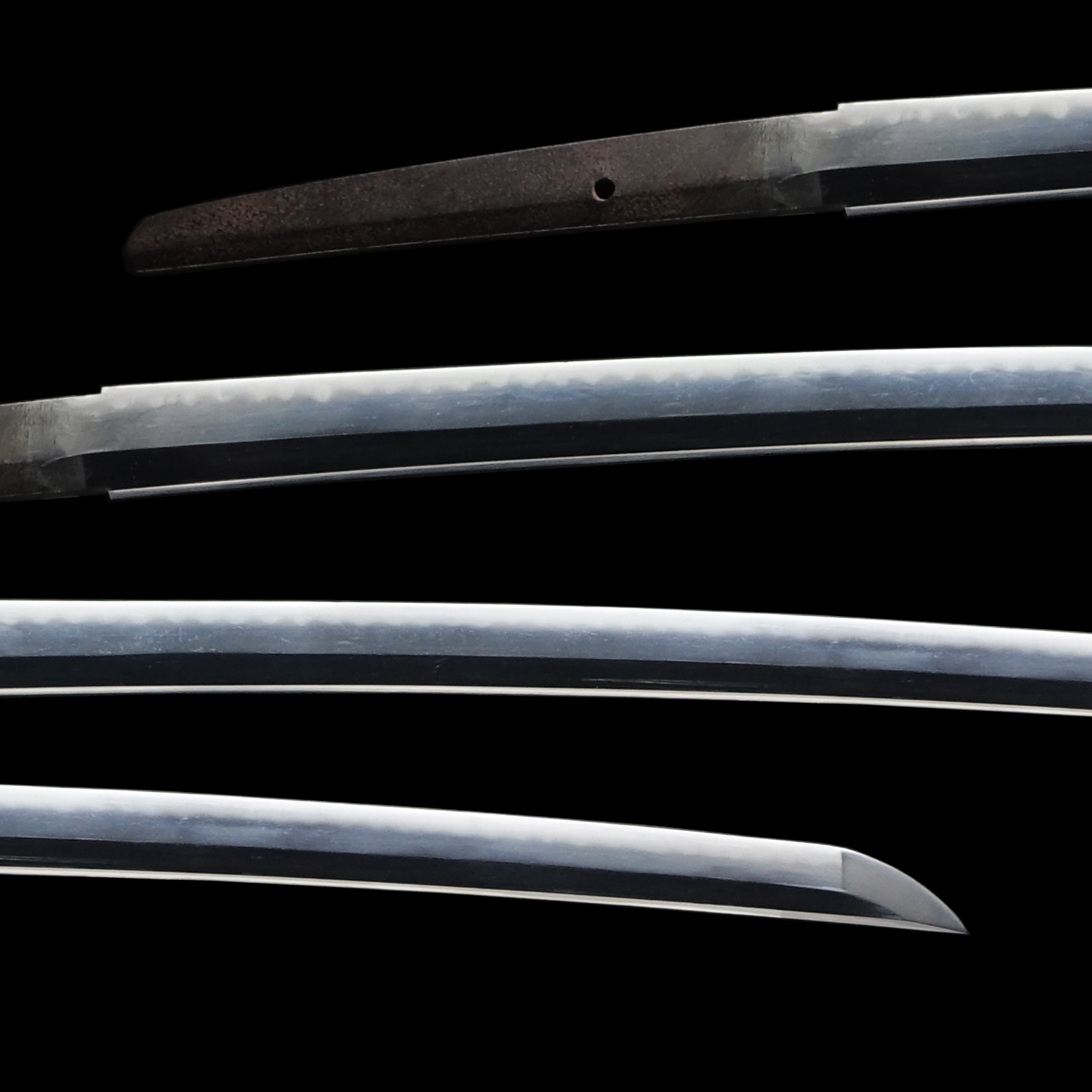
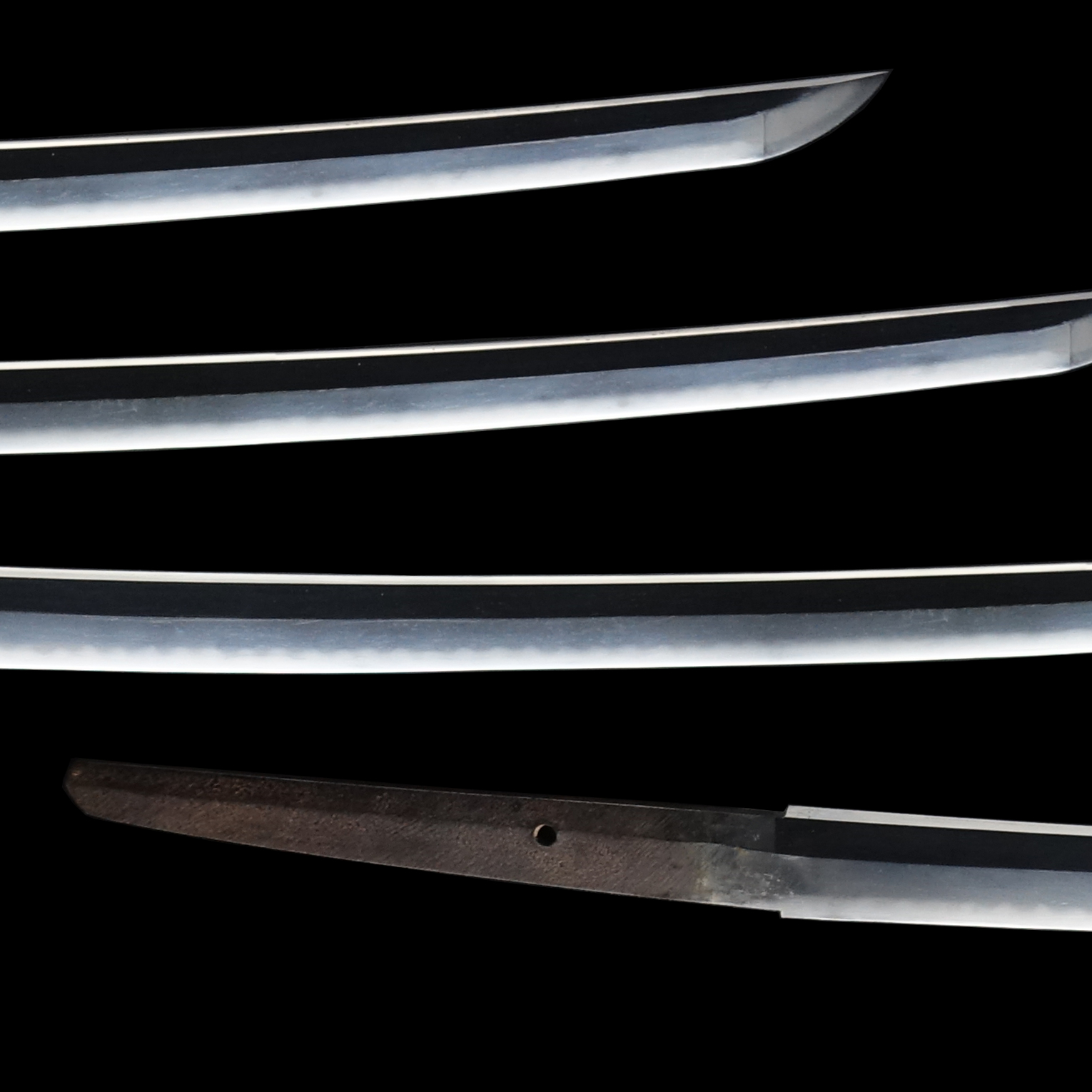
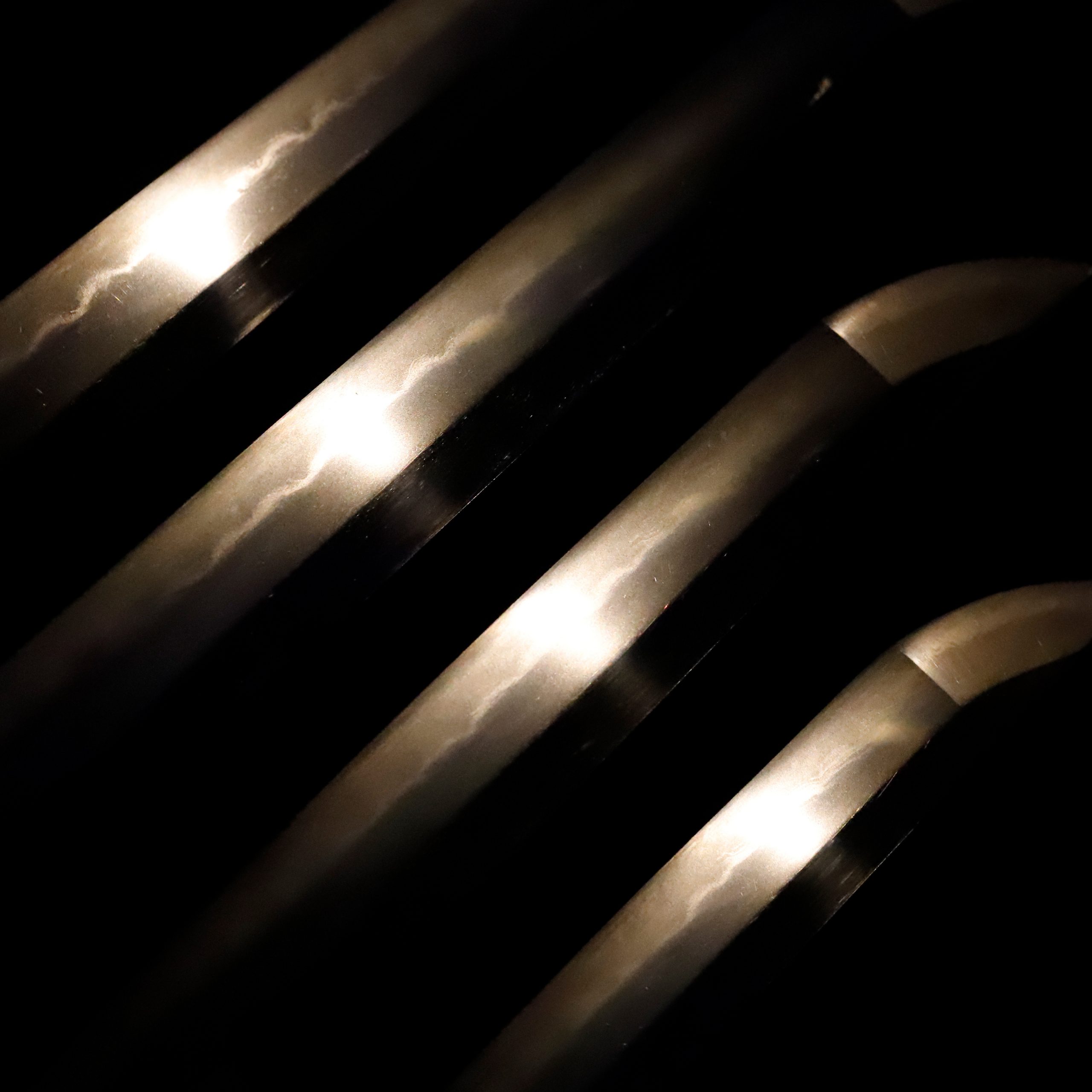
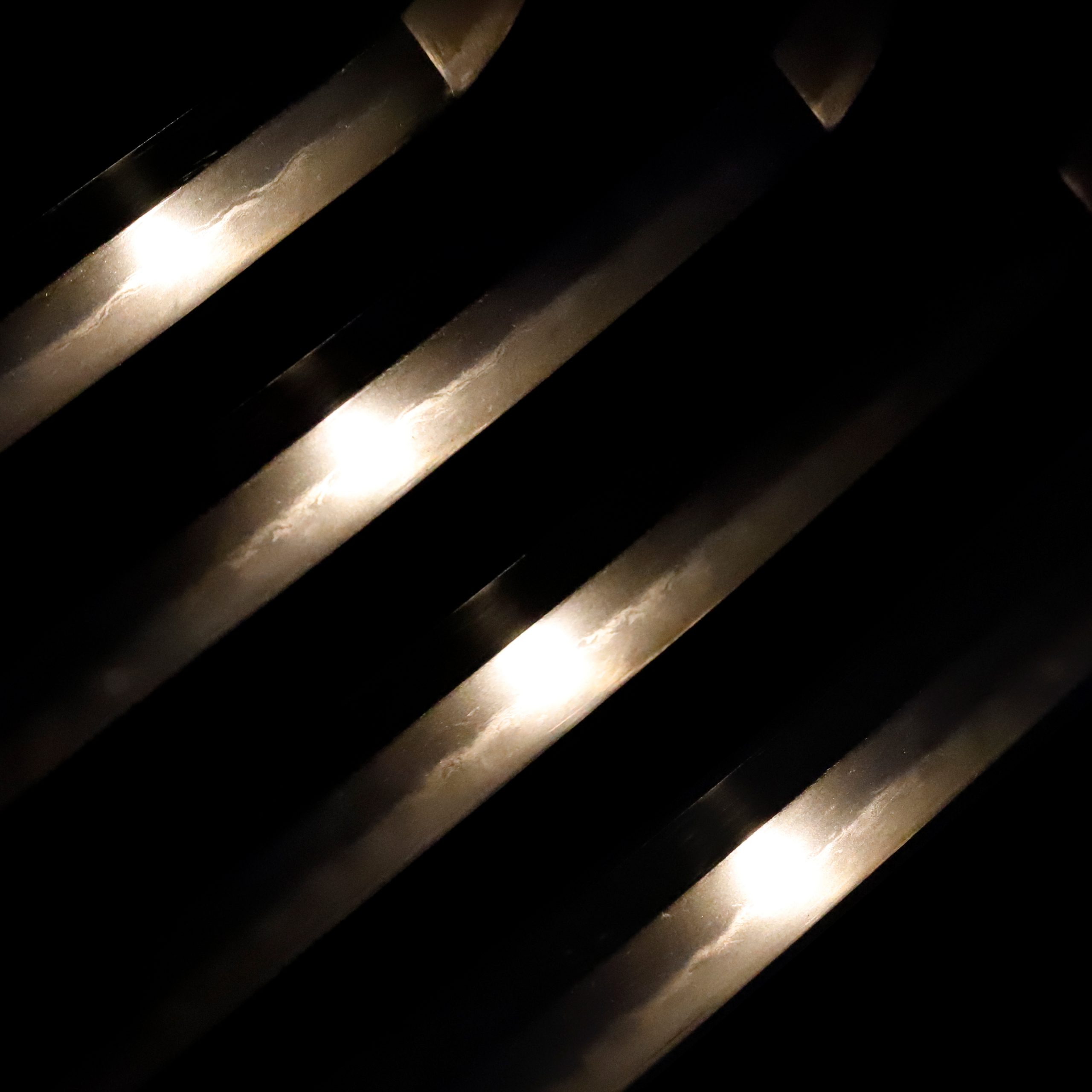
Nakago:Nakago is the tang of the Japanese sword.
Japanese swordsmiths left the black rust on the tang because it prevents red rust while the tang is in its handle. And the discoloration of the tang was created over time, and it is a great indicator for a Japanese sword specialist to estimate when the sword was forged.
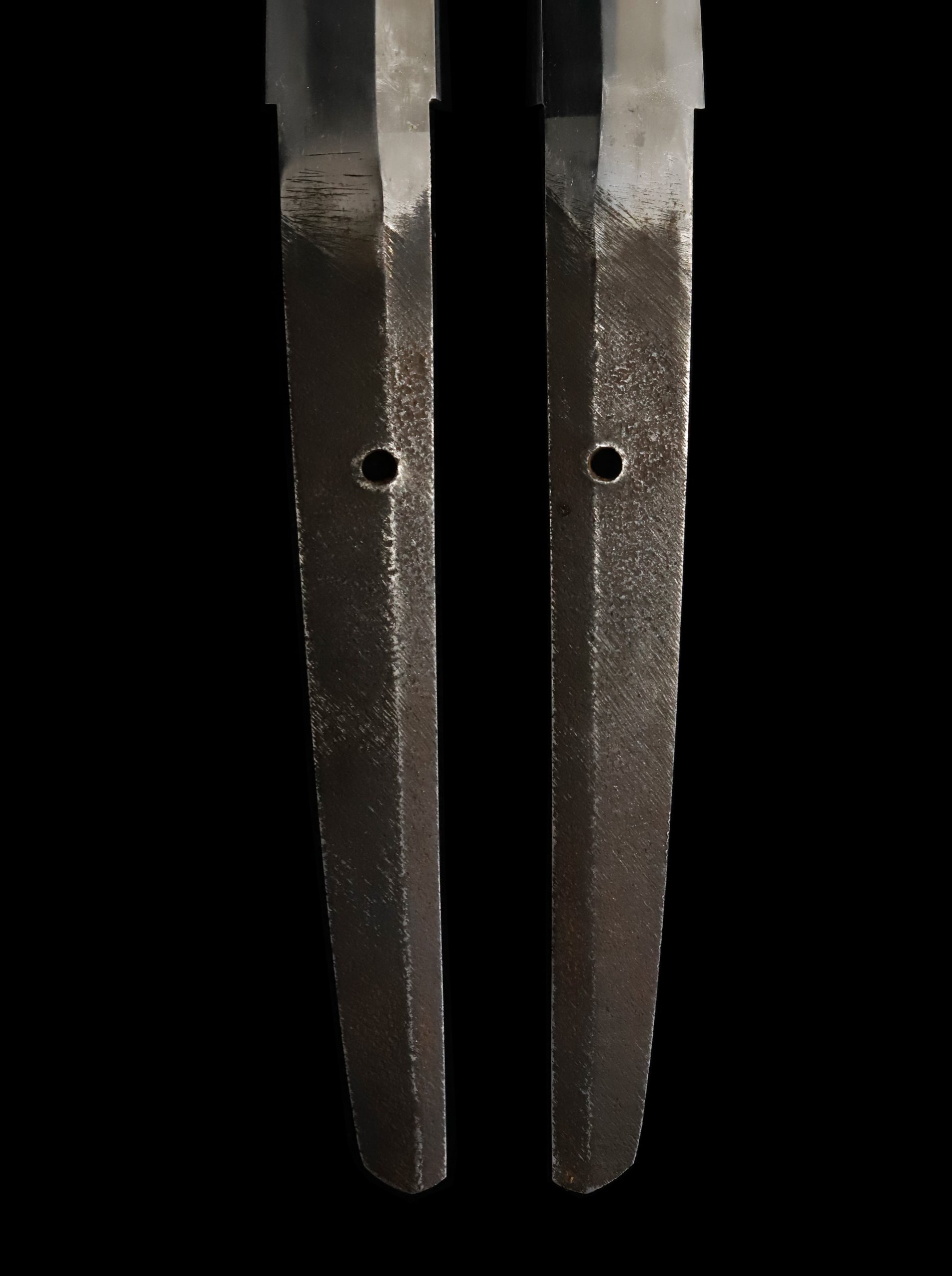
Koshirae: Koshirae is the mounting of the Japanese sword. There are several parts that consist of Koshirae such as Saya(Scabbard), Tsuka(Handle), Tsuba(Handguard).
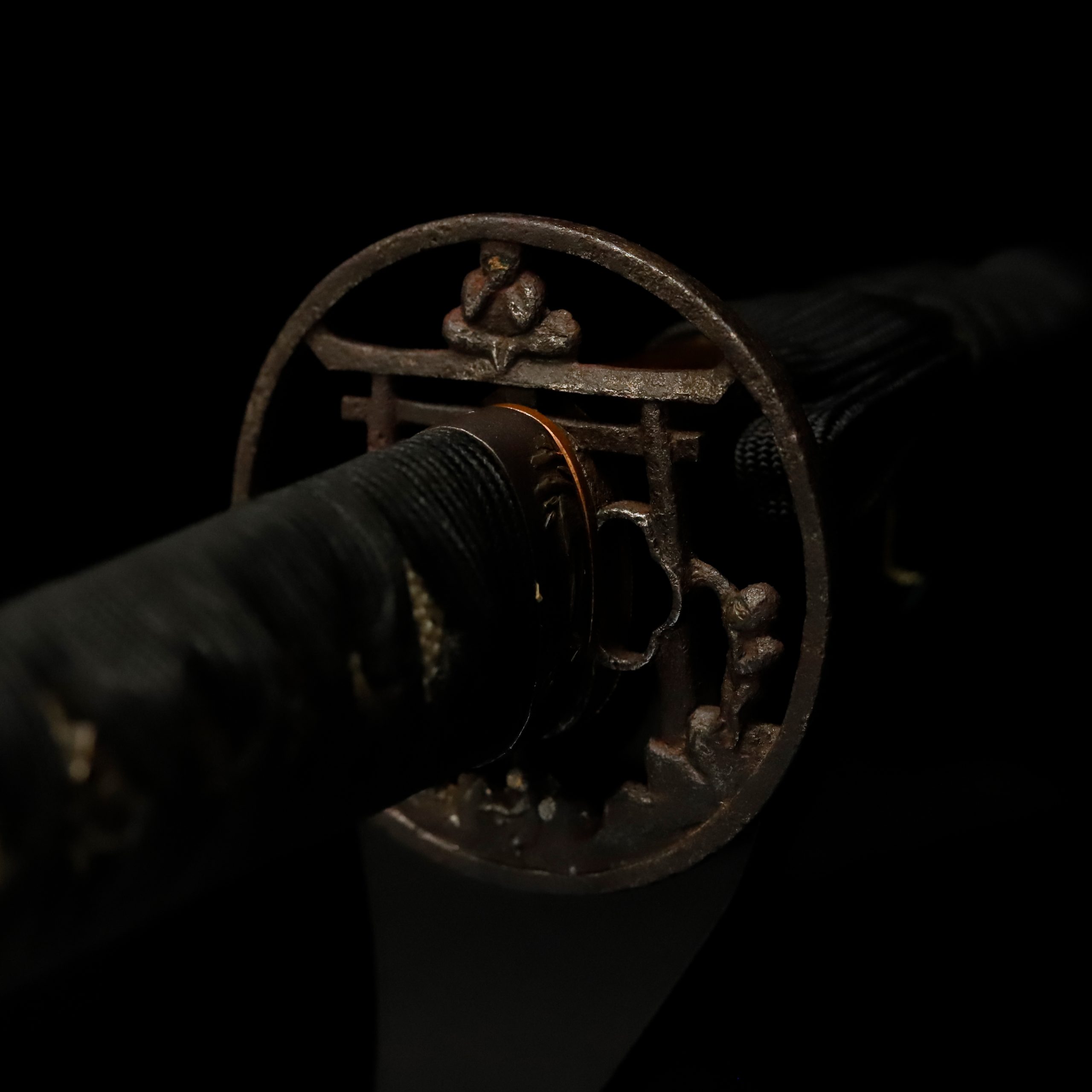
Fuchi-Kashira:A pair of matching sword fittings that cover the upper and bottom parts of its sword hilt.
It is challenging to judge the exact motifs of this Fuchi Kashira due to aging; however, we could still find flower and bamboo grass-like leave designs. It seems the gold paint was initially applied to these motifs and had a gorgeous look. We hope you will enjoy these things as an antique texture.
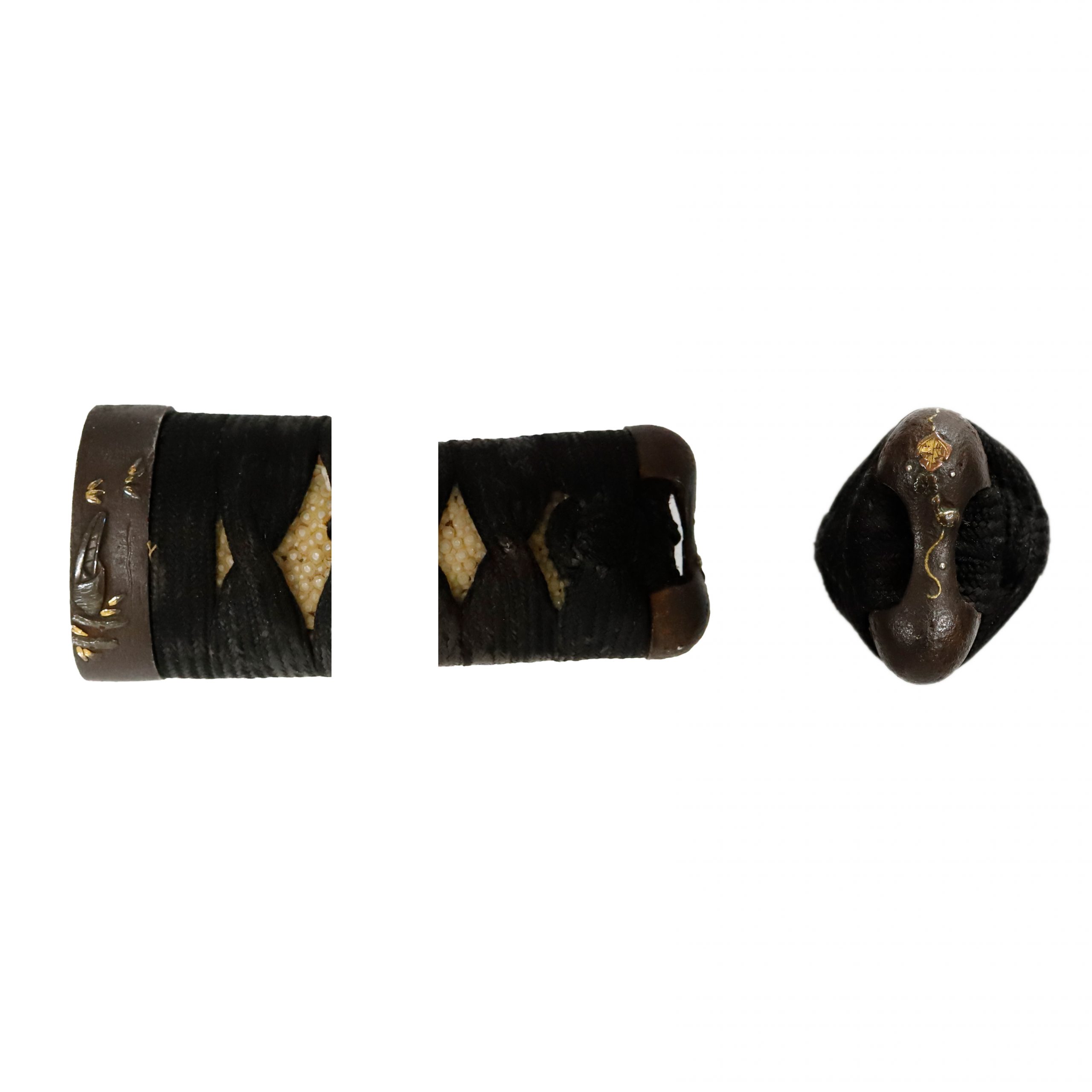
Tsuka and Menuki:Tsuka is the handle of the Japanese sword and Menuki is its decoration.
It seems that flowers are the motifs of this Menuki. The upper side flowers have six petals. And lower side plants look they are composed of three leaves. We guess each of them might be family crests. For example, the latter plant design is similar to the Ken Katabami (剣片喰) pattern. The Katabami (片喰) is a plant whose leaf has a heart mark shape. People thought this plant design represented the prosperity of descendants; therefore, many Samurais loved this pattern. The Ken Katabami is a combination of swords and Katabami leaves. It is said that people have associated with the Samurai by incorporating the sword motif. Understandably, lots of Samurai families used the Ken Katabami pattern. It shows the relationship between this plant motif and the Samurai culture.
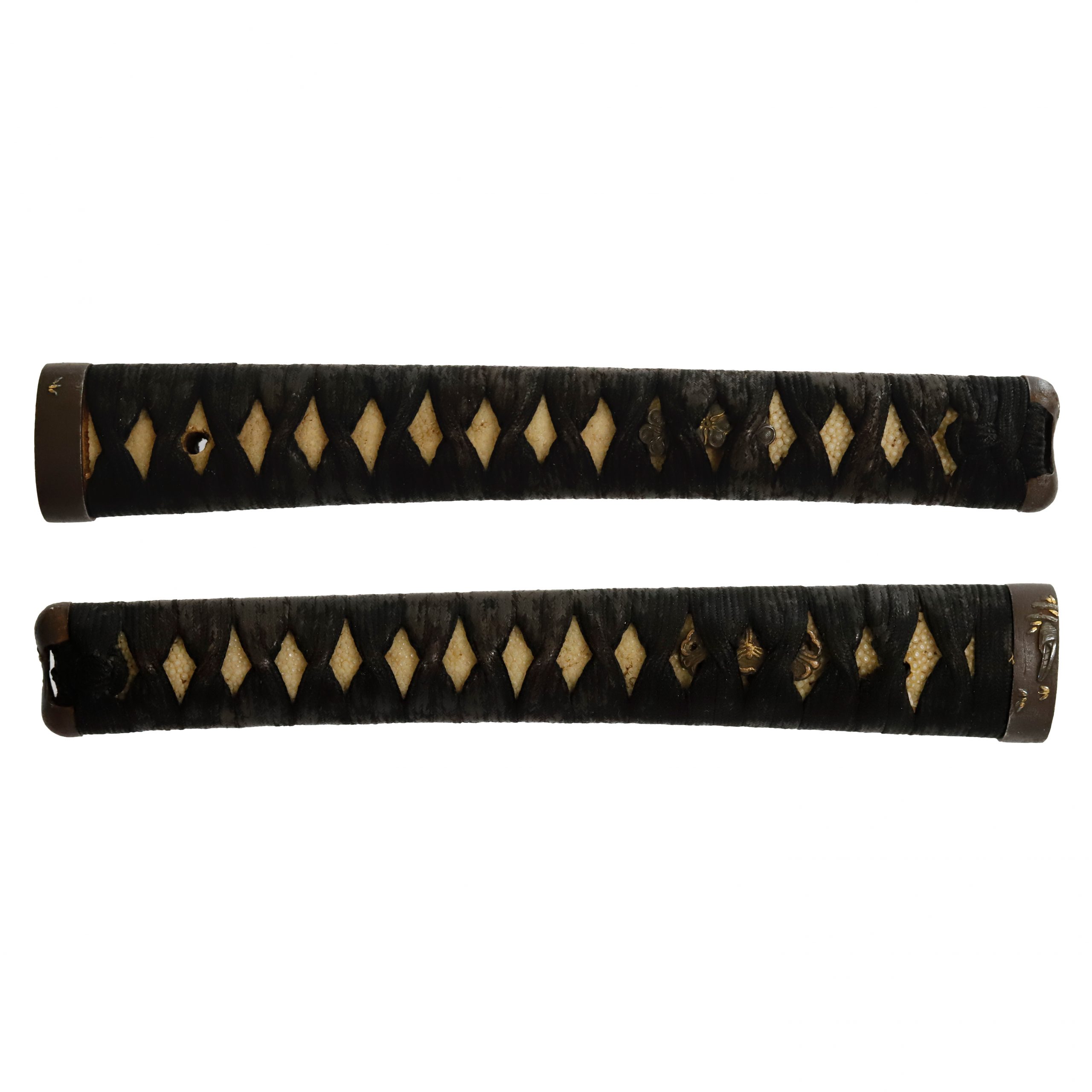
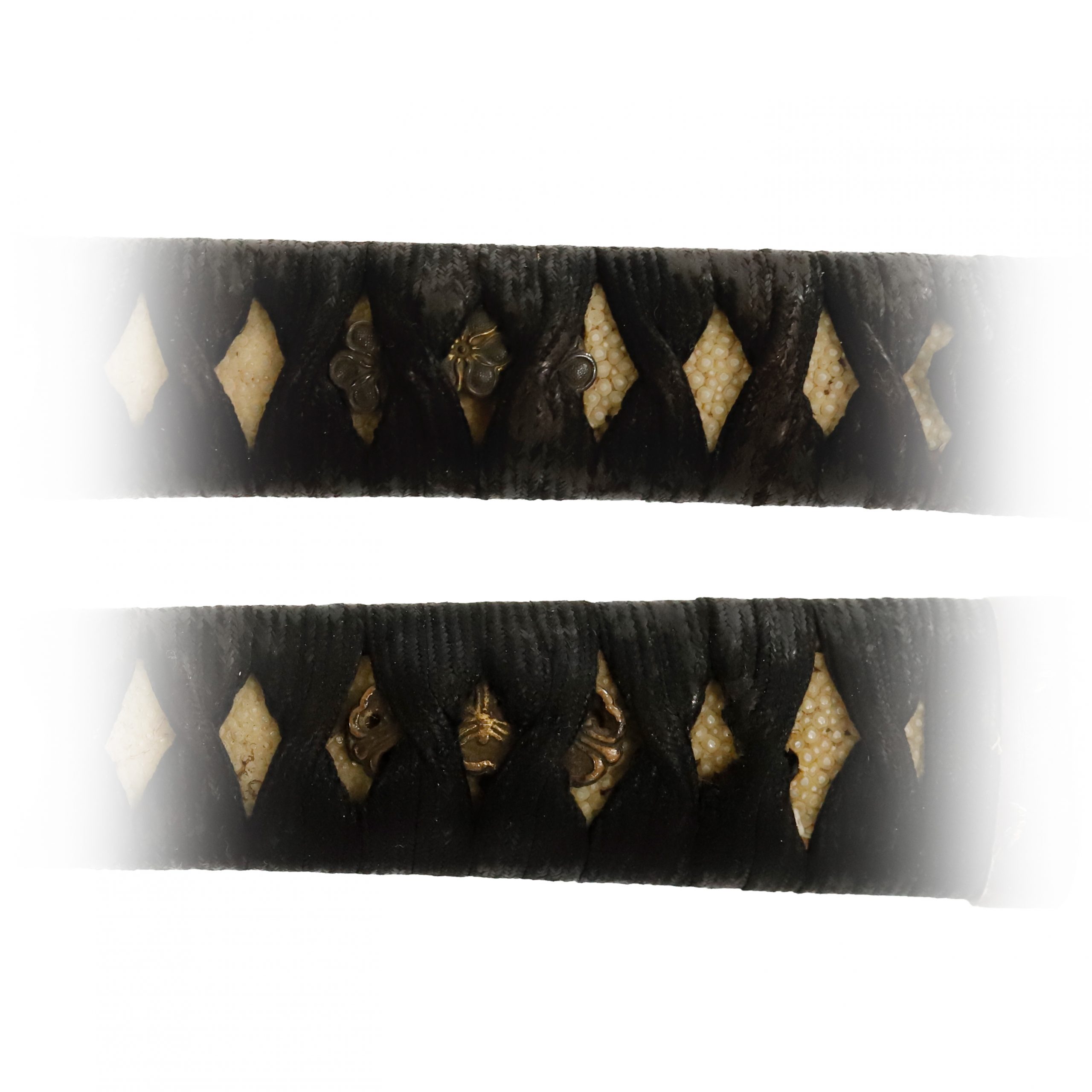
Tsuba and Habaki:Tsuba is the handguard for the Japanese Sword and Habaki is the equipment to make the blade not touch its scabbard inside. It prevents the blade from getting rusty and chipped.
Oval-shaped Tsuba made from iron. This Tsuba’s design depicts four children (or human-like animals) and the Torii (鳥居, a gateway at the entrance to a Shinto shrine). According to a theory, initially, the tree that chickens perch on is the origin of the Torii; these birds are offerings to gods. The Tori (鳥) means bird, so the name Torii came from “Tori ga iru (鳥が居る, there is a bird)” in Japanese. There are several theories about its etymology. The Torii pattern was used by the Torii family and mainly several Shinto-shrine parishioners involved in the priesthood.
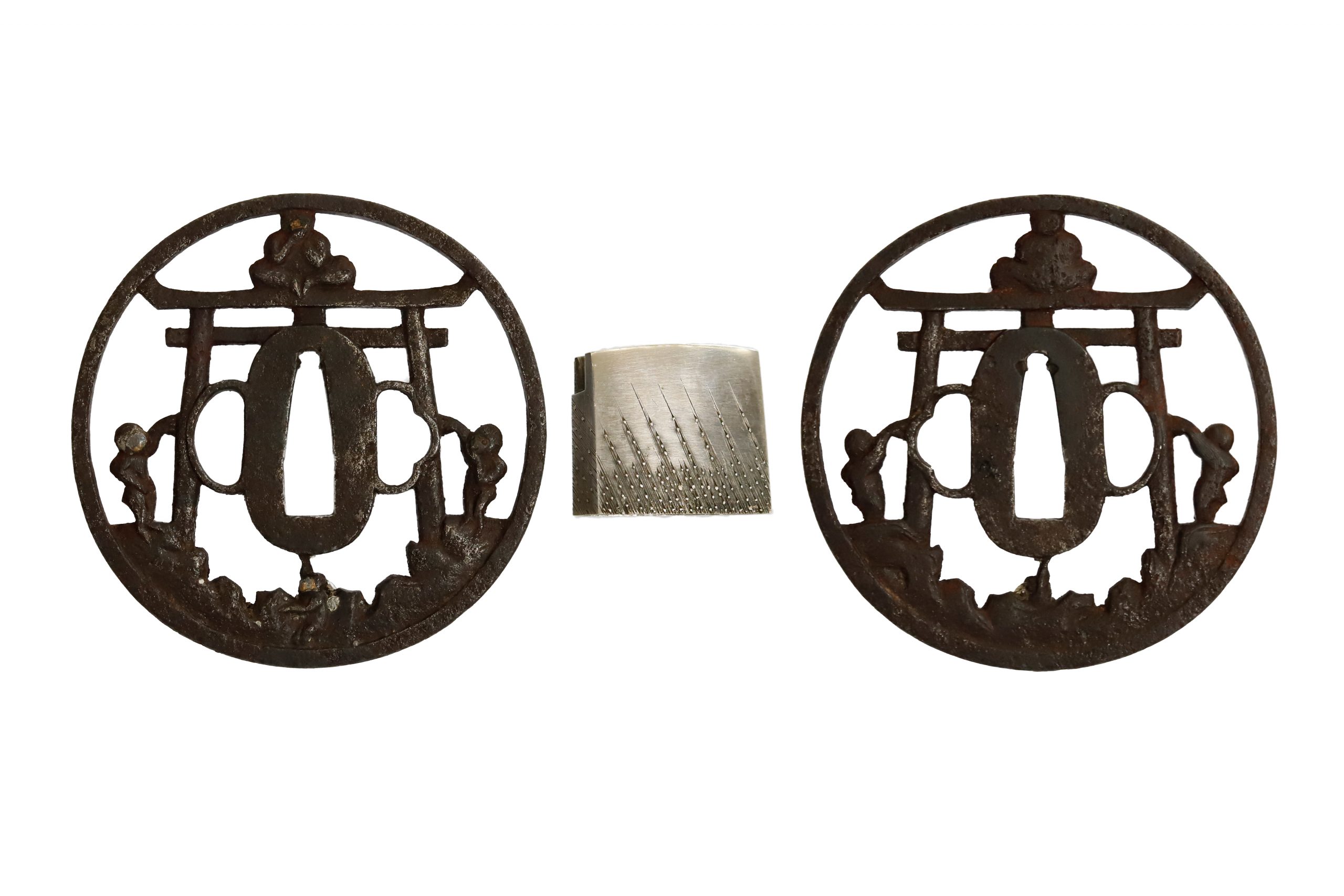
Saya: Saya is the scabbard for the Japanese sword.
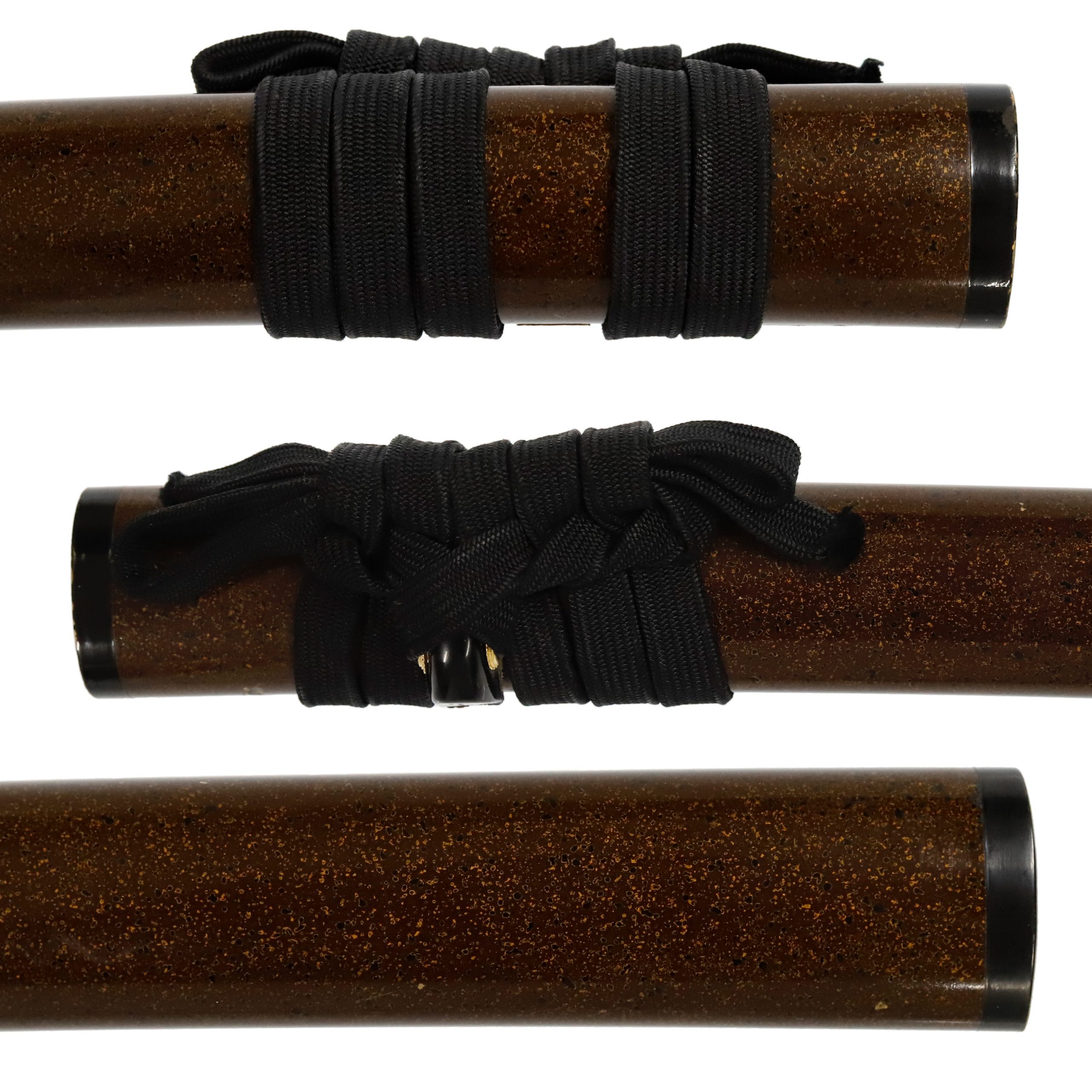
Authentication Paper:NBTHK Kicho Certificate for both blade
NBTHK, also known as Nihon Bijutsu Touken Hozon Kyokai (the Society for the Preservation of the Japan Art Sword), is one of the oldest Japanese sword appraising organizations in modern-day Japan. They authenticated the blade on June 6th in the 46th year of Showa era(1971). They appraised it as Kicho Token , an old form of certificate. The purchaser will receive these original certificates as well. We can also translate what is written into English and make a PDF file for your record if you request.
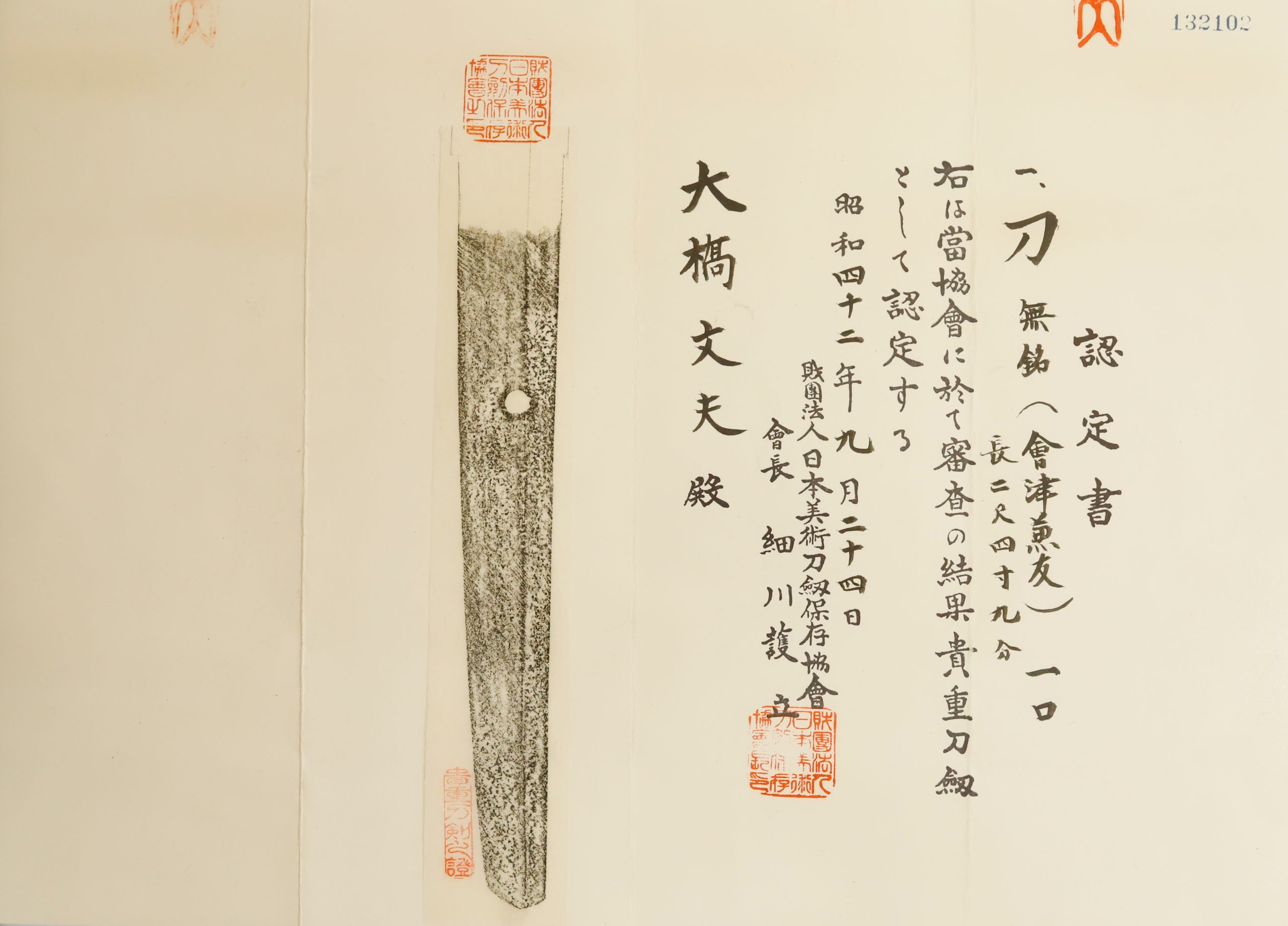
Registration Number : Yamaguchi 18386
The Board of Aichi in Yamaguchi prefecture issued a registration paper for this sword . It is called Jyu Token Rui Torokusho(銃刀剣類登録証). Bunkacho(The Agency for Cultural Affairs) acknowledges a Japanese sword with this paper as a work of art.
The sword needs to be traditionally hand-forged and made of Tamahagane carbon steel to be registered in the system. With this paper, its owner in Japan can legally own an authentic Japanese sword. Based on this registration number, we will apply for its export permit.
This paper will need to be returned to the board of education when the sword is being shipped abroad, but you can receive a copy of it. An English translation of this registration paper is available on request.

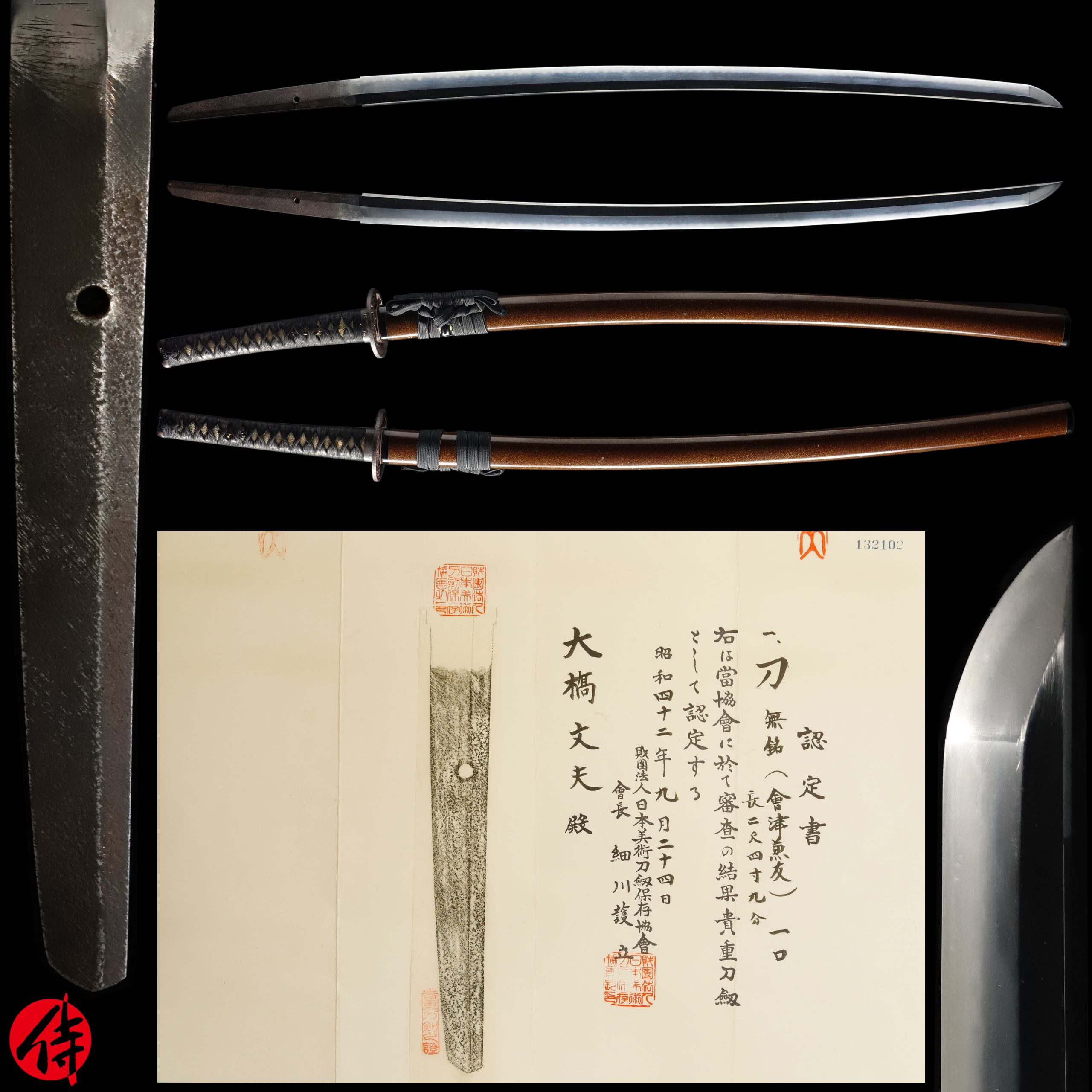
—————————————————————–
【About us】
Samurai Museum is located in Tokyo, Japan, exhibiting antique artifacts related to the Samurai history. Samurai Museum Shop is the place for those who are interested in Japanese culture and craftsmanship. We deal with antique Samurai swords/armor, traditional crafts made in Japan and so on.
【Japanese Sword& Export Process】
The Japanese swords we deal with are hand-forged edged swords made in Japan. It was made from the traditional carbon steel called TAMAHAGANE(玉鋼). Samurai Museum is familiar with the proper legal procedure for an antique/ authentic Japanese sword to be exported from Japan. We have sent more than 400 Japanese swords for the past three years (~2022) to amazing owners who appreciate its historical value.
Each Japanese sword is registered under the Agency for Cultural Affairs and the Board of Education in Japan. They issue a registration paper for each Japanese sword for its owner in Japan to legally possess it. The Japanese sword with its registration paper means it was traditionally hand-forged in Japan.
To legally export the sword from Japan to other countries, we will have to apply for its permit to the Agency for Cultural Affairs(Bunkacho) and return the original registration paper to the Board of Education. It normally takes around 2-4 weeks to receive this permit after submitting required documents. And we would like you to expect at least 1-1.5 months for your order to arrive at your given address after you ordered. For more detailed info, please click here.
It is allowed for residents in Japan to own authentic Japanese swords without a special license as long as they come with registration papers. Please feel free to contact us if you are a resident of Japan, whether temporarily or permanently. We will also assist you when you leave Japan and need to obtain the export permit.
【Payment Method】
We accept payment through Stripe (Credit card), PayPal, Apple Pay or ChromePay, all of which are secure payment methods. Also, you don’t need to make an account on Stripe for the checkout. If you prefer other payment method, please contact us. After confirming your payment, we will apply for an export permit. You may either pay in JPY, USD, AUD, CAD,EUR,CHF or GBP. The price is set in Japanese Yen. Prices in other currencies are automatically calculated based on the latest exchange rate.

* If the amount is above 1 million JPY, Stripe or wire transfer will be the only options for payment.
【Shipping】
We have shipped authentic Japanese swords to the USA, UK, Canada, Mexico, Germany, Switzerland, France, Hong Kong and Australia. If you don’t live in these countries and like to order, please contact us first before making a purchase. We offer Free International Shipping as long as we can send antique Japanese swords by either EMS or FedEx(Canada).
We normally ship by EMS(Express Mail Service) provided by Japan Post. When we receive an order from the Canada we will use FedEx instead as EMS temporarily stops shipping from Japan to those countries due to COVID-19.
We will send you a tracking number for your order as soon as we hand it to the post office/FedEx. We will put 100 % insurance on the shipping document without any extra charge. Based on the total amount, there might be a duty tax or other fee for you to pay, depending on the countries. We use package cushioning to protect the item and put it in a PVC pipe, which is one of the most secure packages because of its durability.
It will normally takes 5-14 days for the item to arrive at your given address after we dispatch it. Time of delivery is estimated as accurately as possible by the carrier but does not take into account any delays beyond our control such as by inclement weather, post office holiday seasons.
* If you live in Australia and like to purchase an authentic Japanese sword, please click here to know the detail.
*Please keep in mind that due to the spread of COVID-19, there might be delays in shipping. If you like to know the detail about shipping, please feel free to ask us.

【How to make sure the condition】
Please keep in mind that what you are going to purchase is an antique item. We uploaded high resolution photos for you to check its condition thoroughly. If you like to see more photos with different angles, please feel free to contact us. We will be happy to send them to you so that you can make informed decision. It is essential for us to know that you are happy with your choice of a sword. and we are prepared to use the best of our ability to serve you.
【How To Contact Us】
Please contact us through email, Facebook Messenger or Live Chat if you have any questions. You can find each icon on the right side of the website. Please click one of them to reach us. We will reply to you within 1-2 business days.
【The Art of Nihonto(Japanese Sword)】
Samurai’s history is a profound, eloquent legacy of ancient Japanese warriors in which millions of people worldwide are being fascinated. If you like to find out the art of Nihonto, please click here.
【A Guide to Japanese Sword Maintenance】
After acquiring an genuine Japanese sword, it is also important to know how to take good care of it. Here is the special video for you. Mr. Paul Martin, Japanese sword expert, shows you how to give proper maintenance to your sword. By mastering how to clean the Japanese sword, its aesthetic beauty will last forever.
When you purchase a Japanese sword from us, you can get a Free Japanese sword maintenance kit. It comes with four tools(Choji Oil, Uchiko Whetstone Powder, Peg remover, Oil Applicator). By watching the video instruction above , you can enjoy learning how to maintain your Japanese sword while appreciating it. If you have any difficulty assembling the sword or cleaning the blade, you can feel free to contact us.


MORE ANTIQUE JAPANESE SWORD FOR SALE
SWORDS WITHOUT CERTIFICATES FOR SALE
LEARN JAPANESE SWORD TERMINOLOGY
Thank you for reading all the information on the page. If you have any difficulty choosing the right Japanese sword for you, we will be more than happy to help you find the one that speaks to you the most. Please feel free to contact us.
